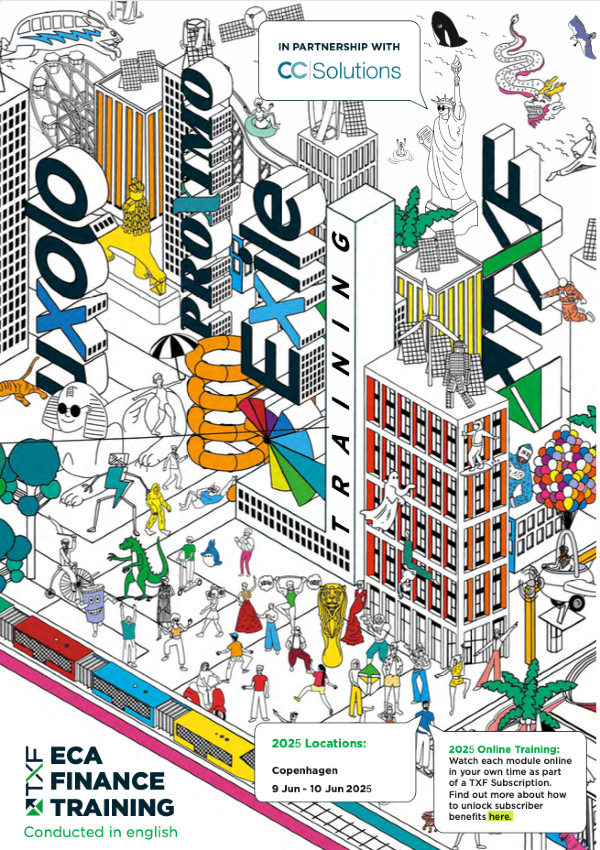All sides can benefit from the Belt and Road Initiative
As the expansive Belt and Road Initiative (BRI) matures, it’s becoming increasingly clear that China cannot entirely fund the potential infrastructure and business opportunities alone. Could there be a larger role for non-Chinese corporates and financial institutions to play? Agnes Vargas, director, FI Asia, Commerzbank, considers their prospects.

Against a backdrop of tightening monetary controls, growing protectionism in the US and rising energy costs, the Belt and Road Initiative (BRI) appears to serve many purposes – corporate, logistical, as well as political and cultural.
Total investments have, to date, topped $87 billion with foreign direct investment (FDI) involving $60 billion, says China’s Ministry of Commerce, and yet there are billions more to come. These strategic investments serve to promote greater economic cooperation between China and Eurasia via broadening trade links – opening China’s industry and markets to foreign investors and pushing its corporate base into new markets.
Here, the opportunities are apparent: China’s great financing needs for its patchwork of investment projects and merger and acquisition (M&A) activity will require other streams of finance, namely from corporates and financial institutions, while we can also expect to see increased trading opportunities as a by-product of this.
BRI, though expansive and ambitious, isn’t without challenges. For China, success will rely on the consistent performance of its economy over the BRI’s lifespan, and a consistent approach by the government towards FDI and even to outward investment.
It’s a two-way street, though. Chinese companies venturing into frontier and emerging markets also face political uncertainty, currency fluctuations and environmental considerations, all necessitating a more sophisticated approach to risk and cash management.
High stakes and returns
BRI clearly appeals to Chinese corporations as new markets open and the country moves away from low-cost manufacturing towards high value goods and services. Deals are now being struck in a wide range of sectors, including technology, real estate, leisure and healthcare across Asia, Middle East, Africa, Central Asia and Europe.
The stakes are high. While Chinese trade volumes with the US have fallen in recent years, BRI-related investments have risen considerably. Last year, China’s external trade with BRI countries touched $1.1 trillion, contributing to 14.2% year on year growth in China’s foreign trade that year.
A driver of BRI deals is capital goods and infrastructure, particularly in emerging and frontier markets. According to Asian Development Bank estimates, 45 Asian countries (a large component of Belt and Road countries) will require a total of $11.7 trillion of funding for power generation projects before 2030; $7.8 trillion for transport infrastructure and $2.3 trillion for telecoms infrastructure. Meanwhile, other commentators estimate Africa’s infrastructure deficit at $90 billion each year over the next decade.
For its part, China can draw on almost unrivalled experience in infrastructure development. Since 1978, the country has developed signal expertise in building railways, roads, ports, telecoms and technology. China now has 12,000 miles of high-speed rail track, more than the rest of the world’s high-speed rails track combined.
And it is already paying dividends: China won $126 billion of new infrastructure contracts from BRI countries in 2016, worth 52% of the country’s total engineering, procurement and construction contracts globally that year.
Economies along the Belt and Road can benefit, too. According to the South China Morning Post’s BRI-watching international edition, the Mombasa-Nairobi Railway, a flagship belt and road project, which opened last year is estimated to have boosted Kenya’s economy by 1.5% this year. Additionally, a recent business confidence survey conducted by the German Chamber of Commerce in China, reports that more than one third of German companies in China see a positive effect from the BRI on their future business.
Clearly, as BRI projects increase so do opportunities, trust, expectations and rewards. This is particularly true as BRI matures and China concedes that it cannot fund the initiative alone. So far, funding for BRI-related projects has been largely reliant on Chinese banks, with the Export-Import Bank of China, China Development Bank (CDB), China Export & Credit Insurance Corp (Sinosure) and commercial banks such as the Industrial and Commercial Bank of China (ICBC) and Bank of China featuring strongly. By the start of 2017, more than $110 billion in loans had been extended to BRI projects by CDB, 35% of the bank’s international loans, while the Export-Import Bank of China extended about $90 billion in loans (25% of the bank’s total loans).
As well, the Asia Infrastructure Investment Bank (AIIB), the Silk Road Fund and the Asian Development Bank are providing sizeable financing for projects. There is also a growing role for international banks to complement mainland Chinese funding channels, particularly banks offering a complete suite of financing options across their international banking networks. This is particularly important when raising funds privately as many companies are too small tap public finance, particularly given current investor optics.
Seize the day
Amid the transformation along the Belt and Road, our message is: “Don’t wait for the opportunities; seize them.” The bank is already doing so: via a memorandum of understanding with the Industrial and Commercial Bank of China (ICBC), targeting a business volume worth $5 billion to BRI-related projects over the next five years.
The bank expects the theme of private funding for BRI projects to increase significantly in the coming years, particularly as the picture in Mainland China is pushing more companies to raise funds overseas. Forging working relationships with FIs overseas to share in BRI-related opportunities is therefore part of the solution. As China’s central government looks to slow its BRI spend, opportunities for FIs and corporates in other regions should become apparent.
Even so, it’s not yet evident how SMEs, including Germany’s Mittelstand, can become easily involved. One possible route is through M&A activity. Commerzbank reports some 450 Chinese acquisitions into western Europe in 2016 and 2017, which will likely increase in coming years; particularly as America is an increasingly challenging market for Chinese corporations.
Then again, Germany is a priority market for Chinese corporations, thanks to its technological expertise, the high quality of its goods and the low risk profile of German assets. Deals are already materialising; not only big-ticket transactions, such as Midea-Kuka and Geely-Daimler, but also lower profile mid-market transactions, in sectors including healthcare, technology and infrastructure.
Nonetheless, hurdles remain. For instance, many Europe-based enterprises are family-held firms and Chinese state-owned enterprises (SOEs) investing in family-owned businesses often find they need to take care in the way in which they approach such deals, which many are showing signs of doing. For instance, Ningbo Jifeng’s recent takeover offer for Grammer, the German auto parts supplier, has involved an agreement to leave Grammer with a high degree of independence and safeguards for its workforce.
As the BRI matures, there’s an opportunity to share the fruits of China’s development with the rest of the world. With all its twists and turns, BRI is now more about the journey than the destination; with all the prospects that follow.





